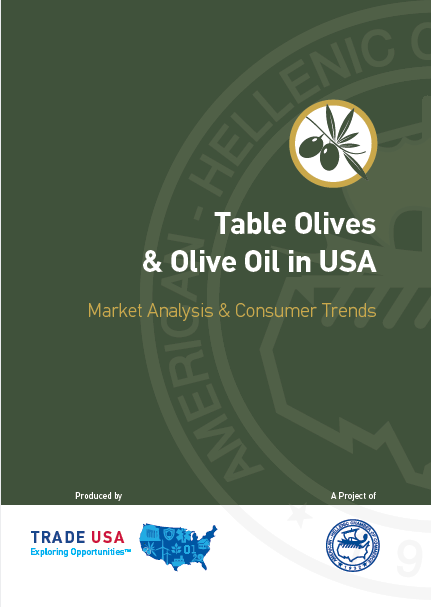The International Trade Department (Trade USA) of AmCham is able to produce focused market research reports for the US Market. The reports provide a thorough and detailed perspective on every sector and product an exporter is willing to trade. It is considered an insightful and useful tool for any export company to begin or expand its bilateral trade with the USA.
Market Reports Available from AmCham’s TradeUSA
Construction & Building Materials
The construction industry is a critical sector in all industrialized economies not only in terms of providing employment and increasing demand for the production of building materials, but also as stated by the Organization for Economic Cooperation and Development (OECD) because “it builds and maintains the structures and infrastructure on which nearly every other industry depends”. In 2013 the US construction industry began to expand (at a rate of 3%) after four consecutive years of contraction, reaching a market value of $961.1 billion. Most of the economic growth has been the a result of numerous economic and geo-political factors, including that of low unemployment rates, increased economic political stability and therefore consumer confidence, as well as increased global trade. This report presents an overview of the US construction and building materials industries, aiming to help potential exports to identify new opportunities for growth in the US.
US Retail Industry
The US retail industry is a vast market both in size and value which is expected to continue growing until 2018. In 2014 the total sales reached $3.2 trillion according to official statistics, suggesting that the industry has a direct and significant effect on unemployment rates and the overall economy. This report presents an overview of the retail industry, focusing in turn on the grocery, food and dairy markets respectively, their growth patterns and forecasts. Households remain the main purchasing power in the retail industry, amounting to 97% share of the total market. Non-store retailing recorded the strongest revenue growth at 25% in current value terms in 2012.
Table Olives & Olive Oil
The USA is a newly producing country of table olives and olive oil, with rising domestic production and demand levels since 2000. However since suitable climate can only be found in the state of California, the USA remains the second largest net importer globally. 97% of consumed olive oil is imported primarily from the Mediterranean basin. Rising consumer demand is a result of multiple factors, including increased awareness of the health benefits and the tendency to adopt a healthy lifestyle and eating habits. These amongst others are analyzed. On the whole the market is already established and therefore product differentiation is essential for new entrants to successfully take the first step.
Herbs & Spices
The report analyzes specific international Harmonizing Codes for both categories of herbs and spices, commonly added for flavoring purposes in the Mediterranean and Asian cuisines. Immigration patterns, increased globalization and the need to maintain a healthy diet and lifestyle amongst US consumers, are factors which have significantly contributed to the comeback of this market, after a period characterized by slow-growth in the mid-2000s.
Fishery Products & Seafood
The fishery & seafood market is becoming an increasingly important part of the US food and beverage industry in the US. The report brings to light the US market for three different categories of the market i.e. molluscs, crustaceans and fish and indicates the overall dominance of the Asian and American markets. In 2015 Canada is the major importing country capturing 22% of the total market for molluscs, while China is a strong player for fish fillets or pieces according to the data analyzed. Europe (Norway and the Netherlands) on the other hand, is a dominant player for smoked or cured fish (e.g. salmon). Greek players who wish to target this oligopolistic market will have to “add a different type of fish in the US sea”.
Bakery & Frozen Products
The US bakery market has grown at a steady rate of 3% annually between 2006 and 2012, reaching a value of $110 billion. This report focuses on the international landscape and the bilateral trade patterns between the US and its diverse suppliers. The analysis suggests that for this category of products in 2015, the majority of the imported products originated from Canada (approximately 60%) and Mexico. Chile and the European Union countries (specifically Italy, Germany and France) are also amongst the main importers, particularly for prepared bread, pastries, cakes and biscuits. Pressured daily routines and less free time, has led consumers to snack, a factor which has significantly contributed to the growth of the particular industry.
Confectionery
Sugar and cocoa confectionery are not amongst the typical exported producers from Greece to the US, as there is strong competition from the international environment but also from within the EU countries. Due to its particularity, however the market is worth exploring, since per capita consumption for cocoa confectionery in the US is found amongst the top national averages worldwide. Specifically in 2015, the inelastic demand for dark chocolate in the US has grown by 7%, while an increasing market presents the ideal opportunity for new products and players.
Condiments, Sauces & Vegetables
Peppers, tomatoes, sauces and mixed condiments are the central focus of this short report. This category of products is considered as supplemental foods since they are usually added to enhance flavor or to complement a dish, particularly in Asian and Mediterranean cuisines. In the US this market is growing as a result of changing consumers’ tastes, lifestyles and globalization. Strong, preference amongst US consumers for Italian and Mediterranean cuisines, creates a market of opportunity with multiple possibilities for expansion.









